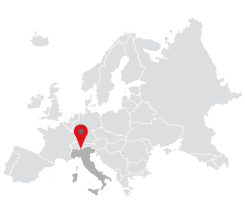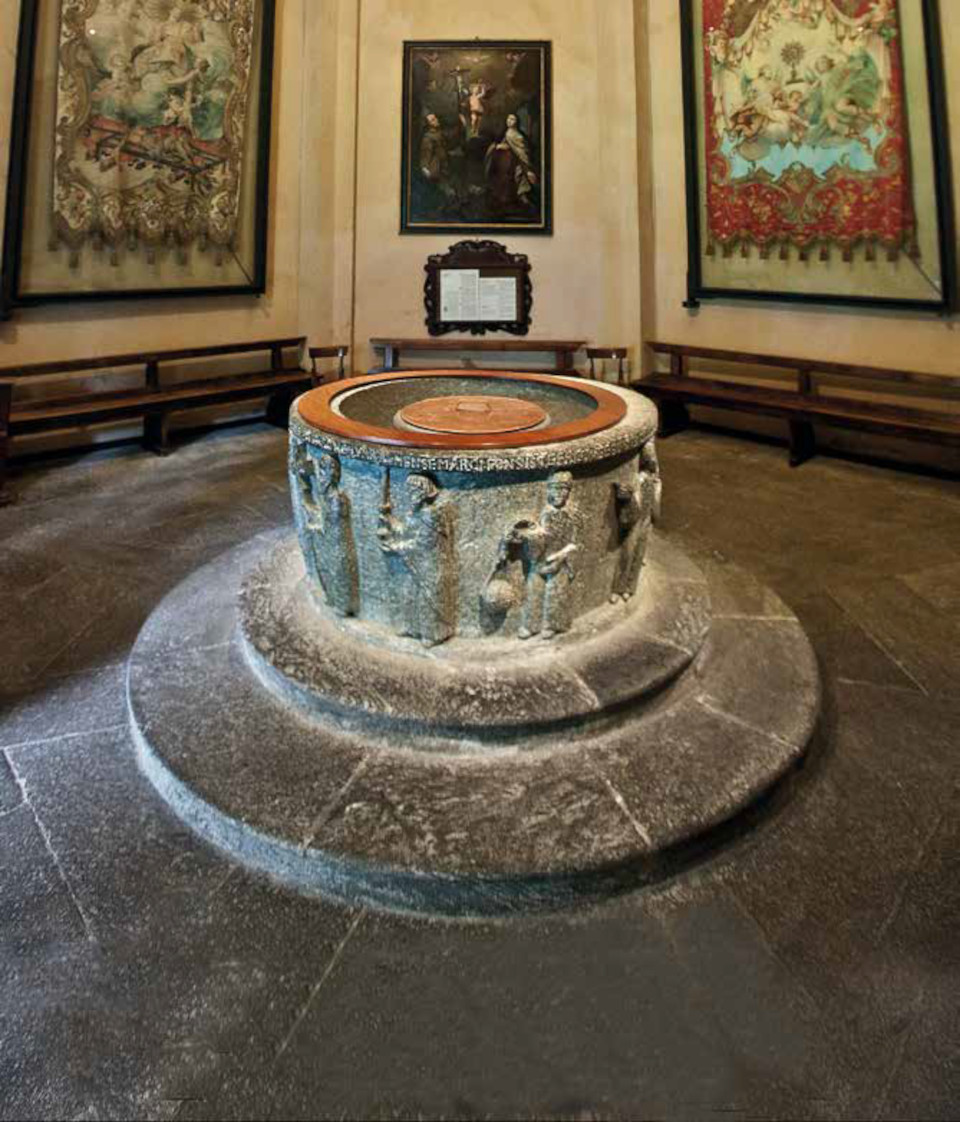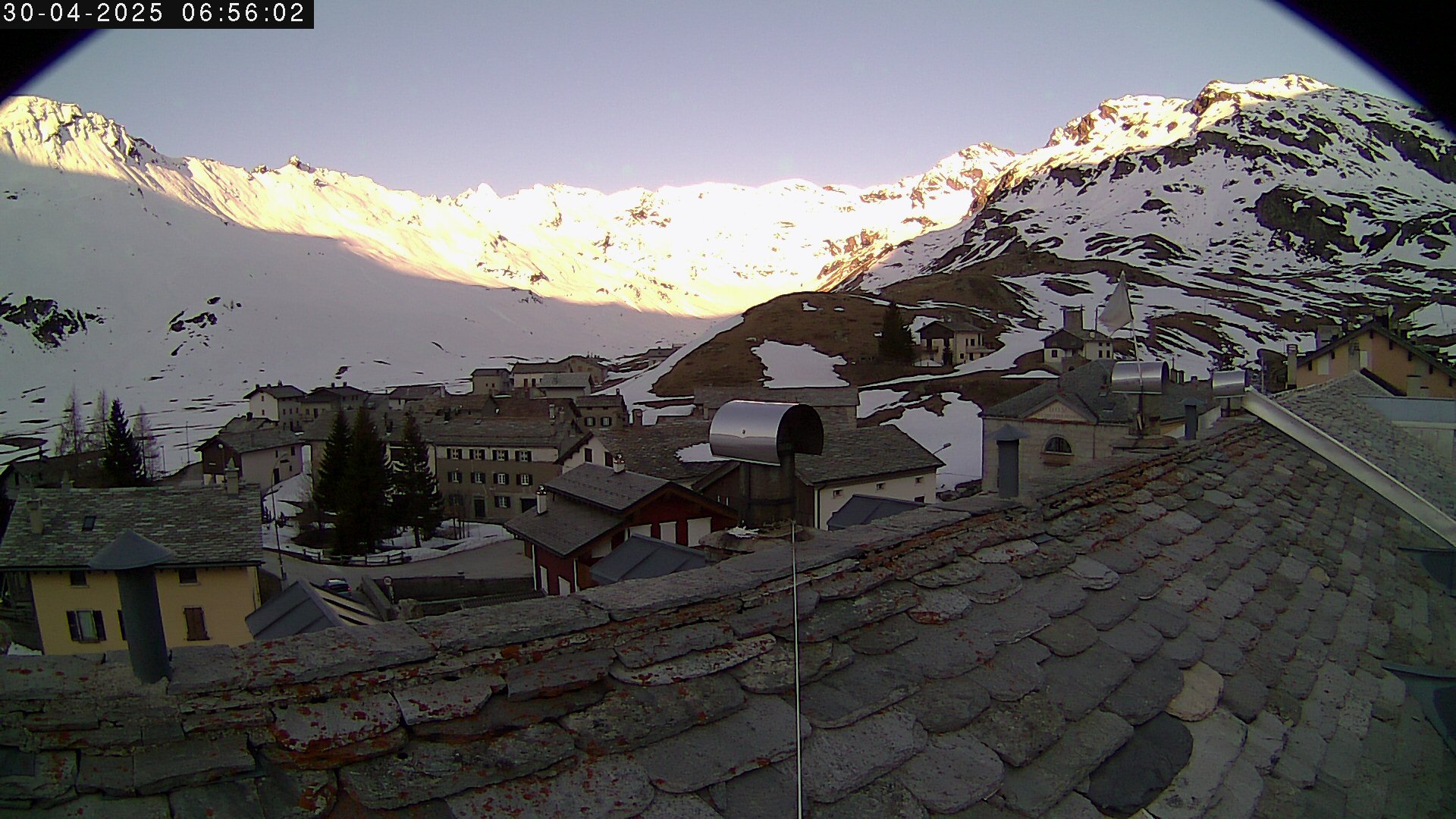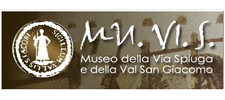by Guido Scaramellini
For anyone with an interest in historical-artistic matters, the baptismal font of Chiavenna, annexed to the collegiate church of San Lorenzo, is an important point of reference for the Italian Romanesque. We are even privileged to know the precise date: March 1156, because it is engraved on the rim of the large circular basin. The outside is decorated with thirteen people carved in half-relief in local soft pietra ollare or potstone. The benediction ceremony of the baptismal water is depicted on Holy Saturday.
The figures of the clergy and laymen are accompanied by a trio of representatives of the society of Chiavenna and Piuro, at that time a single municipality: the nobleman on horseback, the villager emerging from the turret of the castle and the craftsman-merchant represented by a blacksmith iron-working. The choice of the figures offers some insight into the social situation of the time. There are eight clergy: behind the officiating archpriest, to whom the acolyte holds up the book, are the clerics with the processional cross, candlestick, the incense burner and two others bearing bags of holy oils. Vestments cover them down to their feet whilst their hair is invariably long according to the fashion of the time: in ringlets or bob, some sport beards. For the laity the attire is a type of apron to the knee and they also sport long hair or in curls, like the baptized, or a knotted tail like the blacksmith. So could society of the time be composed of just three classes? Of course not. The majority of the population is missing, for by not paying taxes they did not participate in the life of the Municipality which financed the font. It was the members of the three classes who would live in the historic centre, with a similar layout to the current one, but built with a wooden ground floor on a stone-work base. Other areas were destined to be peripheral agricultural areas, such as the Raschi, Roi, Capiòla and districts.




















